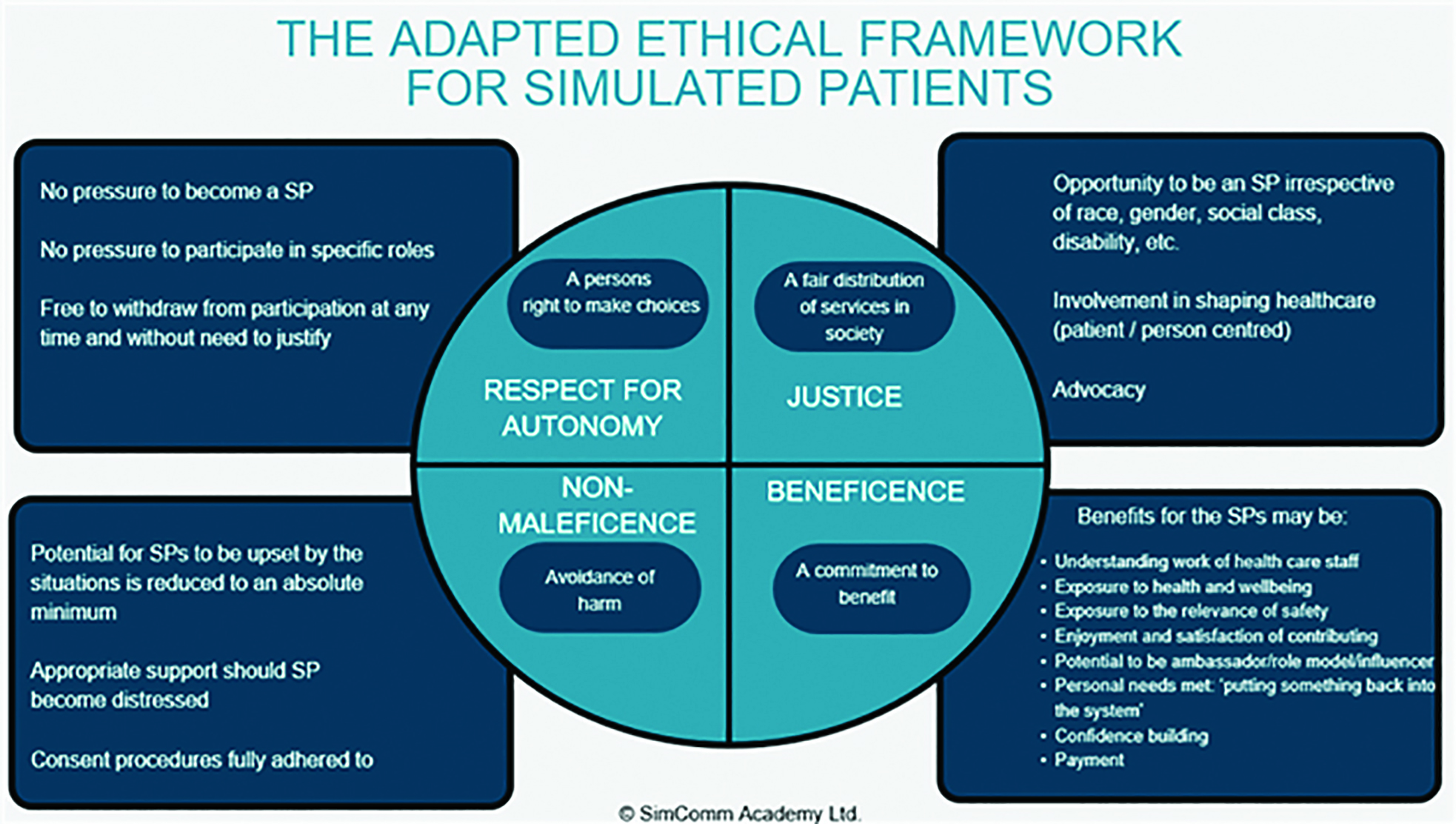
Patient safety is a cornerstone of healthcare, and this principle extends to simulated patients/participants (SPs) who contribute to healthcare education. Ensuring their well-being is an ethical obligation that requires careful consideration of recruitment, role allocation, emotional impact, and ongoing support [1]. This innovation explores an ethical framework, produced with SPs, that prioritises their safety and well-being while maintaining the integrity of the educational event. Originally conceived in 2016 [2], this framework has since been refined, with multiple supportive tools, to enhance its effectiveness and applicability.
The framework is structured around the four key ethical principles: respect for autonomy, justice, non-maleficence, and beneficence [3]. A collaborative methodology was used to develop the ethical framework further. SPs, educators, and simulation experts have authored a suite of resources and processes which now support the efficacy of the framework, with due consideration of accessibility. These include an SP training video with content summary, updated recruitment practices, an understanding of expectations, feedback guidance using the CORBS model (clear, owned, regular, balanced, specific), and an aide memoire outlining key scenario formats and processes. Formal support mechanisms now include follow-ups for emotionally challenging roles, and a process of signposting to mental health services. Additionally, quarterly peer debrief sessions run, along with virtual peer mentoring between experienced and new SPs. A monthly tracker has been introduced to monitor engagement and gather feedback for continuous improvement.
The ethical framework and its associated documents have led to improved support mechanisms for SPs, with the aim of reducing distress and enhancing role satisfaction. Key outcomes include:
•Improved recruitment and role alignment
•Increased SP confidence and satisfaction in their roles
•Reduction in reported emotional distress through structured debriefing, de-roling and support systems
•Strengthened communication between educators and SPs
This framework aligns with the transformational simulation I’s: improvement, involvement, inclusion, identification and influence. The framework is deliberately structured to safeguard SPs while maintaining the authenticity of learning experiences, Figure 1.
Safeguarding SPs is as essential as protecting patients in healthcare education. Embedding SP safety through ethical recruitment, structured support, and peer-led governance improves outcomes for both SPs and learners. The transformative approach of integrating SP voices into their own governance has set a new benchmark for simulation-based education. Future development should aim to embed this framework across institutions, guided by the ASPiH standards and ASPE best practices.
As the submitting author, I can confirm that all relevant ethical standards of research and dissemination have been met. Additionally, I can confirm that the necessary ethical approval has been obtained, where applicable.
1. Diaz-Navarro C, Laws-Chapman C, Moneypenny M, Purva M. The ASPiH Standards - 2023: guiding simulation-based practice in health and care. Available from: https://aspih.org.uk/
2. Hamilton C, Clarkson G, Perry J. O54 Child simulated patients: Being ethically responsible. BMJ Simulation & Technology Enhanced Learning. 2017;3:A36–A37.
3. Beauchamp TL, Childress JF. Principles of Biomedical Ethics (8th ed.). New York: Oxford University Press; 2019.
